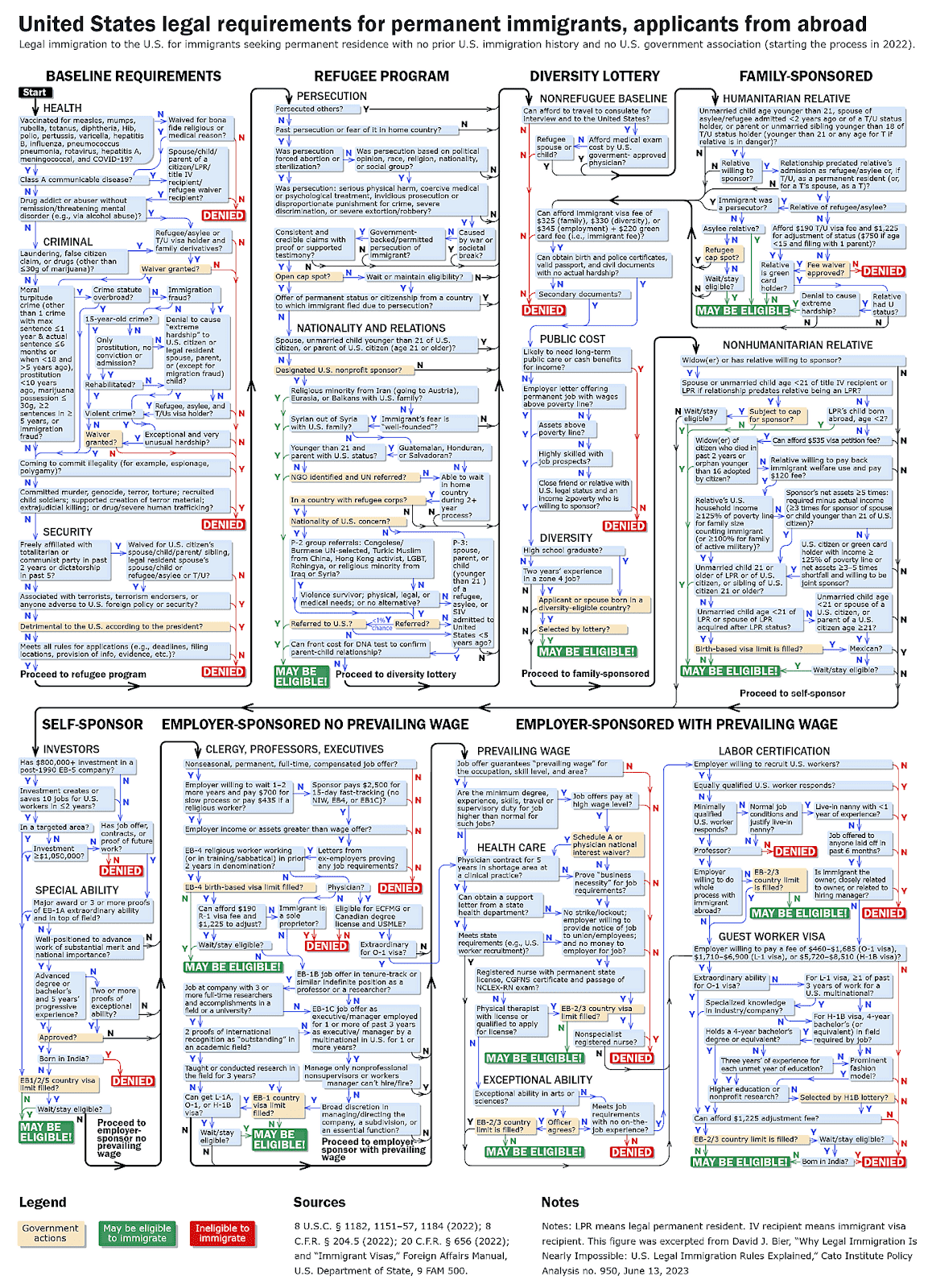
In this lesson, Pastor Szmara points out some of the brokenness of the American immigration system. He mentions, for example, the sentiment that undocumented individuals “get in line.” The line, however, often does not lead anywhere. It is a line to nowhere.
There are currently four immigration pathways. All four are based on legislation from 1965 that needs to be updated. All four pathways have caps that lead to long waits. If you want a little more detail, this article explains the complexity in a little more detail (as does the image below). Basically, an immigrant trying to come to the United States is treated as “guilty until proven innocent.”
From the link above: The family sponsorship is reserved primarily for the closest relatives of someone already in the U.S. This means spouses and children of U.S. citizens and legal permanent residents as well as siblings and parents of adult U.S. citizens. It also includes minor children and spouses of those relatives. There is also a cap. Spouses, minor children, and parents of adult U.S. citizens are uncapped, but their numbers reduce the cap of 480,000 for other relatives down to just 226,000. The result is a massive backlog of 8 million cases. For most countries and category combinations, sponsors will die before their relatives can immigrate.
Immigration to the states for employment is available only in the rarest set of circumstances. The three categories are:
- people with “extraordinary ability”
- workers with advanced degrees or exceptional ability who are conducting activities of national importance
- investors able to invest not less than $800,000 and—in some cases—more than $1.05 million in a business that creates 10 new jobs for U.S. workers within 2 years.
As the linked article says, “These highly unusual cases apply to very few potential immigrants, but even in those cases, the government strictly enforces the criteria to make them as difficult to meet as possible. In 2019, for instance, the extraordinary ability category had a denial rate of over 40 percent.”
The process takes years, and even if no U.S. worker applies, very few employers can afford to keep a job open for such a prolonged period. In 2020, there was a backlog of about 1.4 million for a cap of just 140,000. To learn more, read the full article at the link.
The humanitarian pathway is meant to provide a way for individuals fleeing troubles in their homeland to get to the United States. (You might know that the U.S. turned away a boat full of about 900 Jewish refugees fleeing Nazi Germany in 1939. Many of them ended up dying in the Holocaust.)
Here is what the article says about refugees and those seeking asylum:
“The refugee program is supposed to provide a legal way to immigrate for people who fear return to their home countries. But the rules limit admission to those who fear return based on persecution by a government (or someone the government refuses to control), and only if the persecutor is motivated by someone’s race, religion, political opinion, nationality, or social group. More importantly, the program will only process refugees if they flee from their homes to a group of about 30 countries, and it will only accept applicants from about 30 countries.
“Applicants usually need a referral from the United Nations, and they have a less than one percent chance of receiving such a referral. Moreover, the program has a cap, and the government has adopted processing procedures that make filling that cap extremely difficult. Barely one in 5,000 displaced persons will be admitted to the United States under the refugee program.”
The diversity “lottery” is a random chance of getting into the U.S. The rules are as follows:
- Applicants must show that they can support themselves at or above the poverty line
- They must have at least a high school degree or work experience in a job typically requiring a college degree
- You are only eligible if you are from a country from which fewer than 50,000 people have immigrated to the United States in the last five years (which excludes the majority of the world’s population).
- Only 55,000 slots are awarded this year.
As people of faith, we will have an urge to reflect on how these broken systems affect real people’s lives. We will have an impulse to want them to be improved or even fixed. Here is a link giving just one illustration of the complexity of the current system:
- The Green Card Game
- Nowrasteh, Alex. The Most Common Arguments Against Immigration and Why They’re Wrong. Washington, DC: Cato Institute, 2021.
